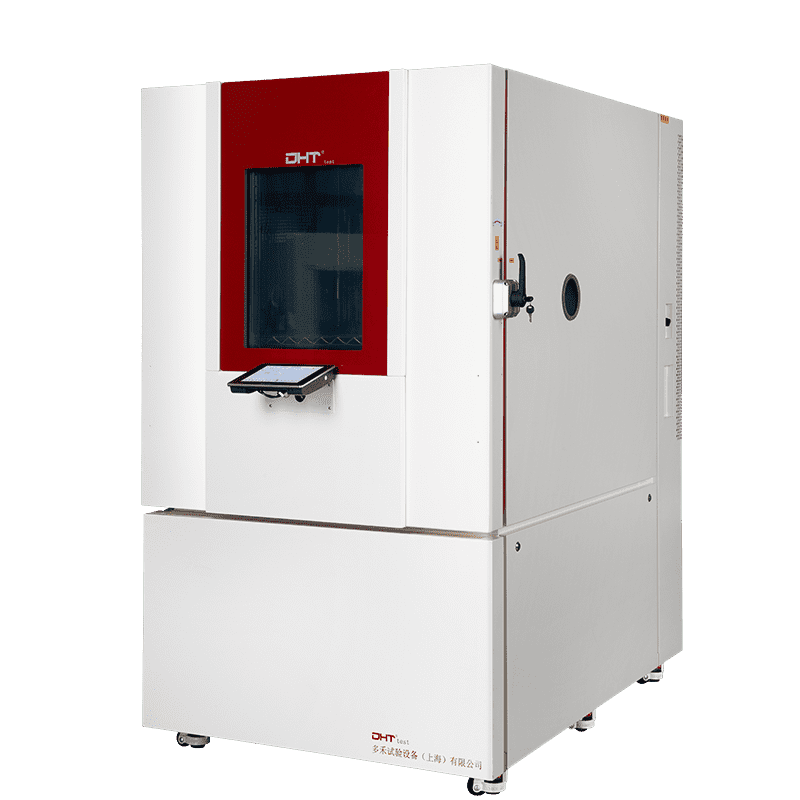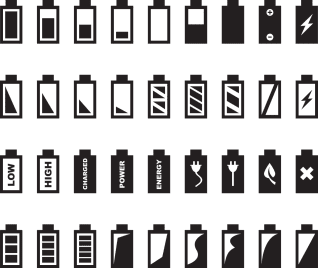Écrit par Shirley
Chef de produit, Doaho Test (DHT®)
In product development and quality verification processes, both vibration tests and shock tests serve as critical reliability evaluation methods. They simulate the mechanical environments that products may encounter in the real world, yet there are fundamental differences between them in physical nature, testing objectives, and engineering applications. Understanding these differences is essential for selecting the appropriate testing method, interpreting test results, and ultimately improving product reliability.
Fundamental Difference: Continuous Vibration vs. Instantaneous Shock
Vibration testing typically involves using a vibration test chamber to simulate the periodic and sustained mechanical vibrations that products experience during operation or transportation. The core purpose is to apply long-duration, multi-frequency, and multi-amplitude vibration loads to assess the fatigue life and reliability of the product structure under repeated stress. This continuous vibration reflects real-world conditions such as machine operation or road-induced shaking.
In contrast, shock testing focuses on short-duration, high-intensity mechanical impacts. It simulates the extreme acceleration or impact force that a product endures during events like drops, collisions, or sudden impacts. Shock tests usually evaluate a product’s resistance to impact by measuring instantaneous peak accelerations, testing its ability to withstand damage in extreme, sudden events.
In brief, vibration testing emphasizes “long-term wear” over time, while shock testing targets “instantaneous extreme stress.” This distinction plays a decisive role in choosing equipment and designing test protocols.
Equipment and Systems: How These Tests Are Performed
The equipment and system design used to conduct vibration and shock tests differ fundamentally to accommodate their distinct test characteristics.
Vibration testing equipment often employs a vibration test chamber or a Benchtop Vibration Table, which generates controlled periodic vibrations through electromagnetic, hydraulic, or mechanical drives. These devices allow precise settings for frequency, amplitude, and duration to realistically replicate vibration spectra encountered during transportation or operation. Advanced vibration test chambers can also integrate temperature and humidity controls to simulate complex environmental conditions.
On the other hand, shock testing equipment typically includes free-fall drop towers, shock hammers, or pneumatic shock devices, delivering instantaneous high-acceleration pulses to the specimen. These systems require extremely fast response times and accurate acceleration measurements to ensure the shock waveform meets stringent standards. The design focus of shock equipment is on precise control of pulse shape, peak acceleration, and duration.
The differences in structure, control systems, and measurement methodologies directly impact test effectiveness and data validity.
Comparison of Application Scenarios: When to Use Vibration or Shock Testing
Choosing between vibration and shock testing largely depends on the product’s operational environment and expected stress types.
- Vibration testing is commonly applied to products like electronic devices, automotive components, and aerospace equipment that require validation of long-term durability and fatigue life. For example, automotive engines and suspension systems experience continuous vibration while driving, and electronic devices endure cyclic vibrations during use. Using a vibration test chamber to simulate actual working conditions can reveal potential fatigue failures.
- Shock testing is more suitable for packaging and transport validation, drop testing, and military-grade blast resistance assessments. It focuses on verifying a product’s ability to resist damage from sudden impacts like drops or collisions. Free-fall tests and transient shock simulations are often used for consumer electronics and medical devices to ensure safety during logistics.
In practice, many products experience both vibration and shock stresses; thus, vibration and shock tests are complementary components of comprehensive reliability validation.
Analysis of Test Effects: Differences in Failure Modes
Failures caused by vibration testing typically manifest as structural fatigue, loosening, solder joint fractures, and material cracking—cumulative damage. Long-term vibrational stress leads to gradual degradation of components, resulting in performance decline or functional failure. Vibration testing helps identify these latent fatigue issues early, guiding design improvements and material selection.
Failures induced by shock testing are usually sudden and catastrophic, such as plastic fractures, internal component displacement, or instantaneous solder joint breaks. The high peak acceleration during shock causes transient stress concentrations, assessing the product’s ultimate load capacity and structural toughness. Shock testing helps determine a product’s resilience against unexpected incidents, ensuring safety during transport and use.
From a failure mechanism perspective, vibration and shock tests cover different risk dimensions in product reliability evaluation—both are indispensable.
Practical Engineering Advice: How to Choose the Right Test Method
Identify the real use environment of the product
- Subject to long-term vibration? → Prioritize vibration testing (e.g., in-vehicle equipment)
- At risk of accidental drops? → Shock testing is mandatory (e.g., handheld electronics)
Select equipment based on industry standards
- For general R&D, Benchtop Vibration Tables offer cost-effective and rapid testing
- Certification labs should comply with standards such as:
- Vibration: GB/T 2423.10, IEC 60068-2-6
- Shock: GB/T 2423.5, MIL-STD-810G10
Use integrated environmental chambers for complex conditions
If products face combined stresses like high temperature, high humidity, and vibration (e.g., engine compartment parts), opt for multi-environment Vibration Test Chambers capable of coupling environmental factors.
View testing as design input, not just an endpoint
Feed back failure points exposed during vibration/shock tests into design iterations:
- Vibration failures → Reinforce structural stiffness or adjust resonance frequencies
- Shock failures → Add cushioning materials or optimize load-bearing structures
Conclusion: Reliability Is Designed and Verified
Vibration and shock tests can be seen as a product’s “endurance run” and “explosive strength test” — the former verifying long-term stability, the latter validating instant survivability. In high-end fields such as electric vehicle battery packs, satellite payloads, and precision medical equipment, these two methods are often combined to comprehensively address mechanical risks throughout the product lifecycle.
Choosing the right equipment—whether a precise Vibration Test Chamber or a flexible Benchtop Vibration Table—and understanding the physics behind the tests means more than passing standards; it’s about embedding resilience to real-world stresses into your product’s DNA. After all, reliable products are not born by chance, but are systematically and scientifically validated.
If you are looking for high-performance vibration testing solutions, please nous contacter for professional consultation and customized services. We are here to help you make your testing more efficient and reliable.
FAQ
Quelle est la différence fondamentale entre les essais de vibration et les essais de choc ?
Les tests de vibration impliquent l'application continue de vibrations mécaniques cycliques au fil du temps pour évaluer la durée de vie et la durabilité d'un produit sous un stress répété, généralement à l'aide d'une chambre d'essai de vibration ou d'une table de vibration de laboratoire. Les tests de choc, en revanche, se concentrent sur des impacts de courte durée et de haute intensité qui simulent des événements soudains comme les chutes ou les collisions, mesurant la résistance du produit aux forces extrêmes instantanées.
Quand devrais-je choisir les tests de vibrations plutôt que les tests de choc pour mon produit ?
Le choix dépend des conditions réelles du produit. Les tests de vibration sont idéaux pour les produits soumis à des vibrations cycliques à long terme, tels que les composants automobiles et l'électronique, afin d'évaluer la fatigue et la durabilité. Les tests de choc sont essentiels pour les produits à risque d'impacts soudains ou de chutes, comme les appareils portables et les biens emballés, pour vérifier leur capacité à résister à des chocs brusques lors du transport ou de l'utilisation.
Quels types d'équipements sont utilisés pour les tests de vibration et de choc ?
Les essais de vibration sont effectués à l'aide de chambres d'essai de vibration ou de tables de vibration de paillasse qui génèrent des vibrations périodiques contrôlées avec des réglages précis de fréquence et d'amplitude, parfois combinées avec des contrôles environnementaux. Les essais de choc utilisent des équipements tels que des tours de chute libre, des marteaux de choc ou des dispositifs de choc pneumatiques conçus pour délivrer des impulsions d'impact d'accélération élevée précises, simulant des chocs mécaniques soudains.


